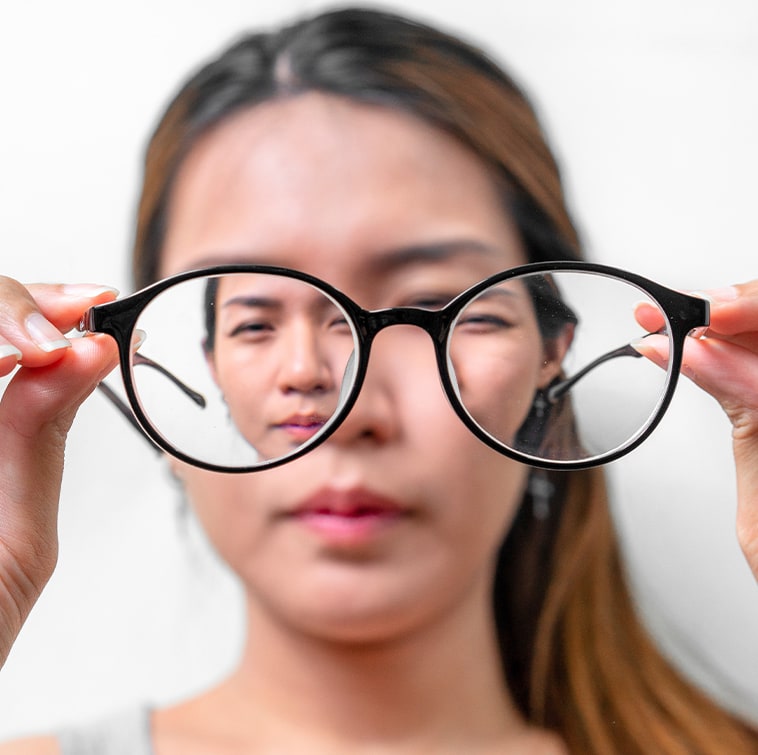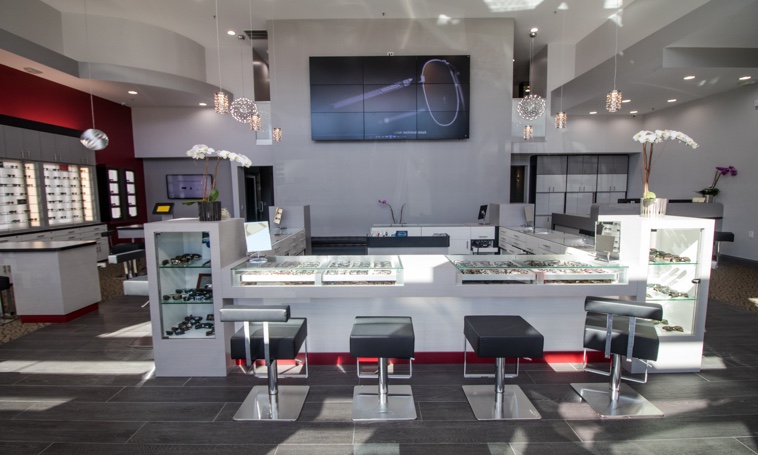
Managing Myopia
Golden Vision Optometry’s long-standing team approach to myopia management and treatment has inspired us to be the leader in myopia control. Our company earned a reputation for our many years of firsthand experience in treating a high volume of cases across the country.
At Golden Vision Optometry, we recommend that children get an annual comprehensive eye exam to test for refractive errors (including myopia) at an early age. The earlier an optometry team can detect vision issues in your child, the sooner we can sit down to build a personalized strategy for myopia control and vision management.

What Is Myopia?
Myopia, more commonly referred to as nearsightedness, is the inability to see objects clearly at a distance. When the eyeball is too long or the cornea is too steeply curved, it causes light to focus incorrectly. Instead of focusing on the retina (located at the back of the eye), light focuses in front of the retina.
Generally, a newborn’s eyeball is shorter than ideal. Under normal conditions, the axial length (the length of the eyeball) increases to a normal or ideal size by adulthood. The appropriate length allows you to see clearly at all distances.
When an eyeball stops growing prematurely (the length is too short) the person experiences hyperopia (farsightedness). However, too much growth—nearsightedness—is far more common.
Typically, myopia continues to progress or worsen until age 20. Then, in most cases, vision stabilizes. Therefore, intervening while the eye is still developing in childhood can benefit long-term vision. Some people may progress even beyond age 20 so case-by-case monitoring is best
Health conditions such as diabetes or visual stress can lead to adult-onset myopia. It’s important to schedule regular visual assessments to determine if any adult vision changes are related to your eye health, including eye diseases.
What Causes Myopia?
While the exact cause of myopia is unknown, it typically develops because of genetic and environmental factors. When one or both parents are myopic, their child has an increased chance of being nearsighted.
However, the way a person uses their eyes can also influence eye growth. For example, children who engage primarily in nearsighted activities (such as reading or computer work) are more likely to develop myopia. Some notable risk factors include:
- Frequent visual stress: Close detailed work can cause temporary nearsightedness or affect distance vision permanently over time.
- Health conditions: Some health conditions, such as diabetes, can contribute to nearsightedness.
- Less outdoor time: Too little outdoor time is associated with too much screen time. The frequent visual stress of nearsighted activities can affect vision. Spending more time outdoors may help.
- Too much screen time: According to a 2017 study in Delhi, school-age children who spend 7+ hours per week using digital screens can triple their risk for myopia progression. Digital eye strain can also cause eye discomfort and risk additional symptoms.
In the U.S., the prevalence of myopia in adults has increased from 25% in 1971 to nearly 50% in 2017. In East and Southeast Asia, myopia is prevalent in 80–90% of people who have 12 years of schooling. One Shanghai study found the average prescription of university students was over 4.00 diopters, with 20% of subjects considered highly myopic.
High myopia is when a patient has severe vision difficulties, as opposed to low myopia when a patient may have few symptoms. Being highly myopic increases the risk of developing eye diseases and significant visual impairment, including:
Current projections indicate the global population will be 50% myopic by 2050. Additionally, 938 million people, nearly 10% of the world population, will have high myopia. Diagnosing and managing myopia today is critical for preventing a growing population of high myopia. Book an appointment with Golden Vision Optometry for myopia solutions.
We’re Here to Help
Our myopia team at Golden Vision is here to help you and your family achieve clear and comfortable vision for years to come.
With advancements in myopia control over the years, even complex cases of myopia can be slowed. To learn more about our myopia control efforts, explore our myopia control: experience & expertise page! Or, Contact our team to book a consultation today!
Myopia Resources

Our Services
Our Locations

We have 9 convenient locations throughout California to serve you. We’re constantly growing, so you and your family always have access to the services you need.
Our Google Reviews
Check us out on Instagram
Error: No feed found.
Please go to the Instagram Feed settings page to create a feed.







